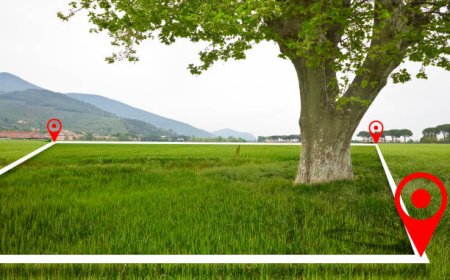Seamless Horse Transportation in California
Horses are sensitive to changes in environment, temperature, and routine. Long-distance travel can pose physical and emotional challenges.

When it comes to moving horses across the vast and diverse landscape of California, every detail matters. From the coastal breezes of Monterey to the rugged Sierra Nevada, transporting horses safely and comfortably requires experience, compassion, and a deep understanding of equine behavior. Horse transportation California is more than just a logistical taskits a commitment to the well-being of these magnificent animals throughout every step of their journey.
Why Horse Transportation Matters
Horses are not just animalstheyre companions, athletes, investments, and beloved members of the family. Whether you are a competitive rider traveling to a show, a breeder sending a mare to a new facility, or a ranch owner relocating your herd, the process of transportation must prioritize safety, reliability, and minimal stress.
Horses are sensitive to changes in environment, temperature, and routine. Long-distance travel can pose physical and emotional challenges. Thats why professional horse transportation services in California focus on creating an environment where horses feel secure and cared forreducing anxiety and ensuring they arrive healthy and calm.
What Makes California Unique for Horse Transport
Californias geography plays a significant role in how Horse transportation California is planned and executed. The state features:
-
Mountainous regions, such as the Sierra Nevada and Tehachapi Mountains, which require expert navigation and specialized trucks.
-
Desert zones, like those around Palm Springs and Barstow, where heat management and hydration are critical.
-
Urban congestion in areas like Los Angeles and San Francisco, necessitating precise timing and route planning.
-
Agricultural heartlands in Central California, where ranch-to-ranch transport is a common request.
Because of these variables, choosing a transport provider who knows the terrain and seasonal climate changes is essential.
What to Look for in a Horse Transport Service
Choosing the right transport service is critical. Here are key features you should expect:
1. Experienced Handlers
Equine transportation requires more than just a driverit needs a horseman. The best companies employ handlers who are experienced in equine care, understand signs of stress or discomfort, and can calmly manage loading and unloading, even with difficult or young horses.
2. Well-Equipped Trailers
A good rig is a rolling stable. Look for trailers that are:
-
Spacious and well-ventilated
-
Equipped with non-slip flooring
-
Designed with partitions for balance and safety
-
Maintained meticulously for cleanliness and reliability
3. Door-to-Door Service
Minimizing loading and unloading points reduces stress on horses. Door-to-door delivery ensures fewer transitions, shorter total travel times, and a smoother overall experience for both horse and owner.
4. Compliance and Insurance
A reputable carrier will be fully licensed, insured, and compliant with all state and federal transport regulations, including USDA guidelines for animal transport. Make sure the transporter you hire has the proper certifications and a clean safety record.
5. Transparent Communication
Communication builds trust. Top-tier companies will provide real-time updates, GPS tracking, and access to drivers or coordinators throughout the transport process. Whether it's a short haul within Northern California or a cross-state journey from San Diego to Redding, staying informed gives peace of mind.
Preparation Tips for Horse Owners
While the transporter handles the logistics, horse owners play a vital role in preparing the animal for travel.
-
Health Checks: Ensure vaccinations and Coggins tests are up-to-date. Some states and venues also require veterinary health certificates.
-
Hydration: Hydrate your horse before the journey, and provide moist hay or soaked beet pulp for added water intake during the trip.
-
Feeding: Avoid heavy grain meals right before transport. Stick with hay and allow digestion before loading.
-
Blanketing: Use blankets only if necessary. Over-blanketing in warm weather or poorly ventilated trailers can lead to overheating.
-
Familiarity: Acclimate your horse to the trailer before the trip. Short practice runs help nervous horses build confidence.
Long-Distance vs. Local Hauls
In California, transportation needs can vary dramatically. Some clients require quick local movesfrom a stable in Burbank to one in Santa Clarita. Others may need long hauls across the entire state, like from the coast of Mendocino County down to a showground in Del Mar. Both types of travel come with unique considerations:
-
Short Hauls: Often easier, but can still stress horses not used to trailering. These require quick loading/unloading and experienced handlers.
-
Long Hauls: Require scheduled rest stops, feeding breaks, and more attention to hydration and temperature control.
Experienced carriers will build the route based on your horses needs, not just highway speed.
Types of Horses Commonly Transported in California
California is home to a diverse equine population, and transporters must be prepared to handle all types:
-
Show Horses: Traveling for events like dressage, reining, jumping, or western pleasure competitions.
-
Racehorses: Shipped to tracks in Santa Anita, Del Mar, or Golden Gate Fields.
-
Breeding Stock: Moved between stud farms and mare facilities, especially during breeding season.
-
Retired or Rescued Horses: Relocated to sanctuaries or forever homes.
-
Working Ranch Horses: Often transported between cattle ranches or training facilities.
Each category comes with specific handling protocols, especially when dealing with high-value performance horses or older, sensitive animals.
Environmental Considerations and Ethical Transport
Californias commitment to sustainability extends to horse transportation. Some premium providers are beginning to invest in:
-
Fuel-efficient vehicles
-
Eco-friendly bedding options
-
Digital paperwork systems to reduce waste
Additionally, ethical transport involves treating every horse with dignity and minimizing stress, injury, or unnecessary time in the trailer.
Choosing the Right Time to Transport
Seasonal timing can influence how comfortable and safe the journey is:
-
Spring and Fall: Generally the most favorable times, with moderate temperatures across most of the state.
-
Summer: Extra precautions are needed for heat, especially in Southern California and inland valleys.
-
Winter: Can bring challenges in the Sierra passes and Northern counties due to snow and rain.
Planning the route and scheduling early ensures flexibility and avoids last-minute decisions that might put your horse at risk.
Final Thoughts
Whether you're a professional trainer, casual rider, breeder, or rescuer, ensuring a safe, calm, and humane journey for your horse is non-negotiable. From choosing a licensed carrier with excellent equipment to preparing your horse with care, the success of a move hinges on thoughtful planning and experienced professionals.
Horse transportation California is not just a serviceits a responsibility to uphold the highest standards of equine welfare and professionalism. When done right, its a seamless experience where the horses comfort comes first and owners can rest easy knowing their four-legged friend is in capable hands.































